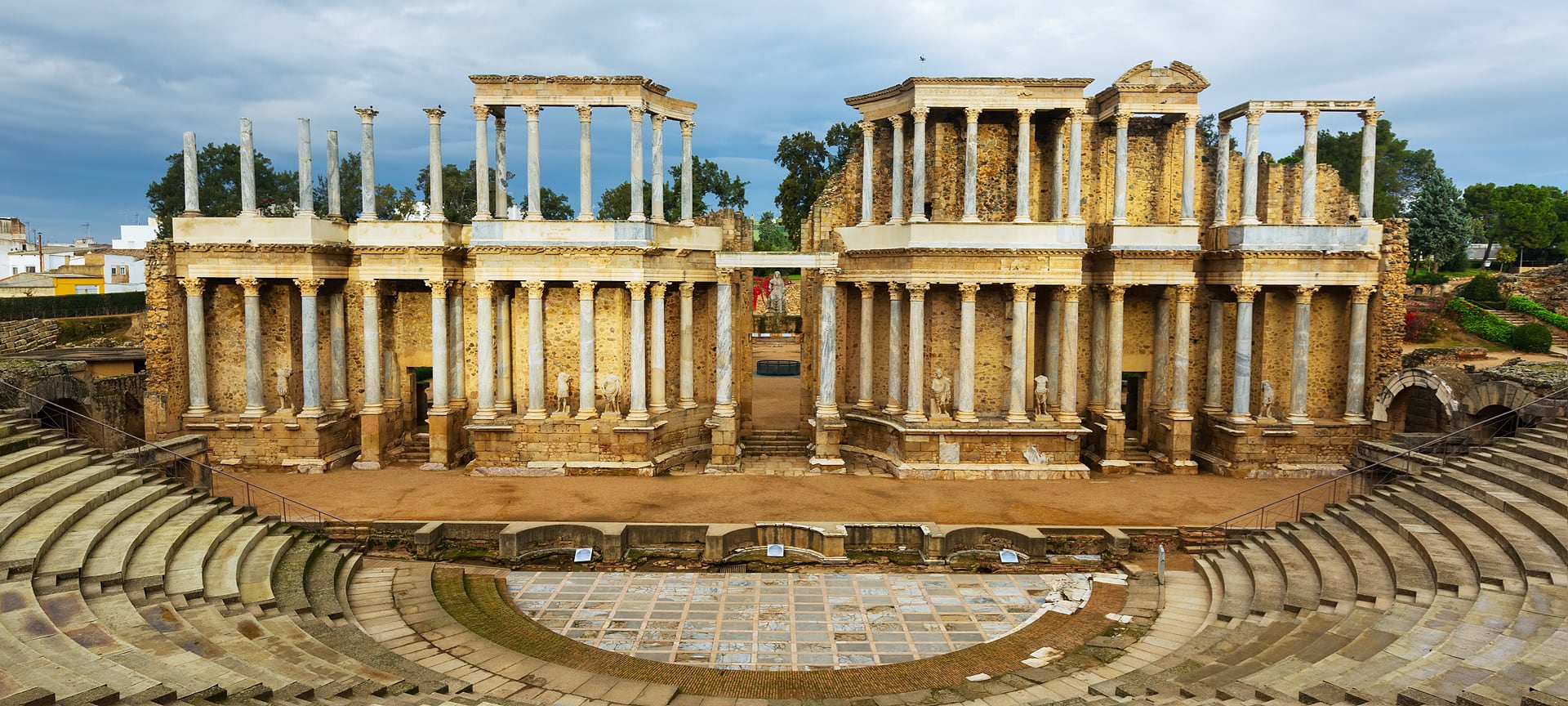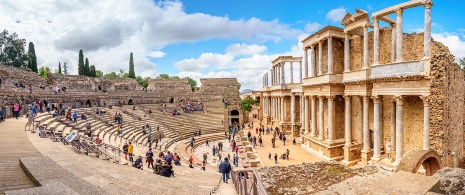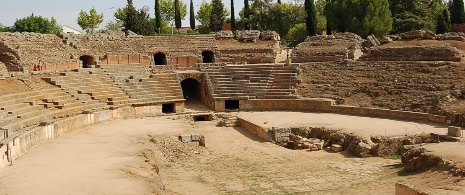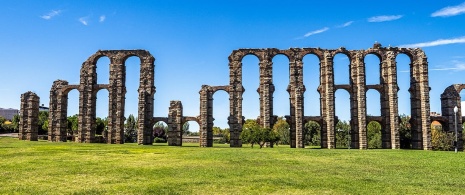
Merida is a World Heritage City, a city so ancient that it was founded by the Romans in 25 BC under the name of Emerita Augusta. This makes it the perfect place for you to lose yourself among the ancient streets, buildings and landscapes that make up one of the largest archaeological sites in Spain. All the city's ancient historical elements have been awarded the World Heritage designation by the UNESCO. Want to know more? Don't miss some of the most impressive buildings.
Debe activar Javascript para poder utilizar este servicio
-

The Roman Theatre
Although this monumental theatre was built between 16 and 15 BC, you will still find a large part of its massive infrastructure standing today. In its peak moment, it could hold up to 6,000 spectators; however, this was not the favourite building of the people of Merida, as the Romans were not very fond of theatre. Nevertheless, it served to portray the majesty and strength of the empire, as it was to a large extent a key place for spreading political propaganda.
-

The Roman Amphitheater
The Roman Amphitheater of Merida was inaugurated in 8 BC and could hold up to 15,000 people in the three tiered seating areas. This building was designed for leisure, for spectacles featuring gladiator fights, fights between wild beasts – and, sometimes, fights between gladiators and wild beasts. This elliptical-shaped building was one of the favourites of the Roman people and was much more popular than the theatre. A large part of the building is still preserved today, so that you can easily imagine a battle straight out of a film.
-

The Roman Circus
This is one of the best-preserved Roman circuses in the entire empire and also one of the largest, measuring over 400 metres long by 96 metres wide, with a capacity for no fewer than 30,000 people. It was the perfect place for the city's inhabitants to enjoy exhilarating chariot races. This is also one of the few Roman circuses in the world that you can see in its entirety. You can't miss it.
-

The Temple of Diana
Built in the 1st century AD, this temple is the only religious building in Merida that has survived the passage of time, although it was later discovered that its main function was to worship the empire and its emperors. It is located in a prime spot, which was the centre of the city's public and political activity, right in the forum. It is in an exceptional state of preservation, so you can stroll among its columns and feel like just another Roman.
-

Los Milagros Aqueduct
This gigantic aqueduct is over 800 metres long – a surprising fact given its age, which is what earned it its name. Visitors to the city, marvelling at the state of such a construction, could only think of the miracle of its brilliant state of preservation. So, the best thing you can do is to see it with your own eyes and vouch for its miraculous preservation.
Although these are just some of the buildings that have been preserved from Roman times, there are more waiting to be discovered, such as the Roman baths, the Amphitheater House and various other artefacts, such as those housed in the National Museum of Roman Art. What are you waiting for? Time for a visit to Merida to discover its history!
Travel plans for inspiring you










